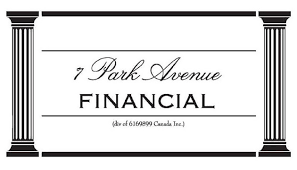|
Finance Growth with Your Own Assets
Unlock Hidden Capital in Your Business Assets
You Are Looking for Inventory Financing & Accounts Receivable Finance in Canada!
Inventory & Receivable Financing: Your Gateway to Growth
UPDATED 08/21/2025
You've arrived at the right address! Welcome to 7 Park Avenue Financial
Financing & Cash flow are the biggest issues facing businesses today
Unaware / Dissatisfied with your financing options?
CONTACT US - OUR EXPERTISE / YOUR RESULTS
Call Now! - Direct Line - 416 319 5769 - Let's talk or arrange a meeting to discuss your needs
Email - sprokop@7parkavenuefinancial.com

Maximizing Business Growth through Inventory and Accounts Receivable Financing
Breaking Free from Cash Flow Paralysis
Traditional banks require perfect credit and lengthy approvals while your business suffocates from cash flow constraints.
Let the 7 Park Avenue Financial team show you how Accounts receivable and inventory financing unlocks the capital trapped in your assets, providing immediate liquidity to fuel operations and growth without the traditional banking maze.
Introduction to Innovative Business Financing
Successful business owners and financial managers are always searching for better financing strategies. One of the most powerful is unlocking cash from accounts receivable and inventory. This method monetizes balance sheet assets to create immediate working capital.
Understanding Working Capital (W/C) Solutions
Working capital financing, often called a W/C solution, boosts liquidity by leveraging receivables and inventory. These facilities come in many forms, though they remain underused by many Canadian businesses. Awareness of these options is growing quickly.
The Evolution of Cash Flow and Working Capital Financing
The idea of financing receivables and inventory is not new. What has changed is how difficult it has become for businesses of all sizes to secure working capital. Even strong companies now face challenges accessing cash flow that works.
Exploring Available Cash Flow Products
Businesses often ask if stand-alone inventory financing is possible. While challenging, it can be structured—though lenders usually tie inventory collateral to broader security, such as a General Security Agreement. Canadian chartered banks frequently require this approach.
Challenges in Inventory Financing
The 2008–2009 recession, followed by the 2020 COVID-19 crisis, reshaped inventory financing. Lenders became more conservative, increasing collateral demands and tightening approval standards. Businesses must adapt financing strategies to these new realities.
Comprehensive Overview of Financing Options
The first option for many companies is traditional bank financing. Banks margin loans against receivables and inventory, often at lower costs. However, strict requirements—such as strong financials, personal guarantees, and consistent performance—limit access.
Alternative Finance Firms and Asset-Based Loans
Independent finance firms provide competitive alternatives to banks. The most powerful solution is the asset-based loan (ABL), which uses receivables and inventory as collateral. ABL financing often provides higher borrowing limits, sometimes doubling or tripling available working capital.
Role of Second-Tier Financing Firms
For smaller transactions, second-tier lenders step in. These facilities typically range from $250,000 to $3 million. Although more expensive, they deliver strong borrowing power for companies unable to qualify with banks.
Achieving Pure Inventory and Contract Financing in Canada
Pure inventory and contract financing is possible through specialized non-bank lenders. In these cases, suppliers are paid directly, and rights to inventory or contracts are assigned to the lender. This lets businesses leverage unsold inventory before it becomes an account receivable.
Case Study: Manufacturing Success
Company: Metal Fabrication (Calgary)
Challenge: $2.8M in outstanding receivables creating severe cash flow constraints, preventing raw material purchases and payroll funding
Solution: Implemented $2M accounts receivable factoring financing facility with 85% advance rate, providing immediate access to $2.38M in working capital for business operations.
Results: Maintained continuous operations, secured 40% bulk discount on steel purchases, hired additional staff for expansion, and achieved 28% revenue growth within 12 months
Key Takeaways
-
Inventory and Receivable Financing: Use assets as collateral to secure financing and to improve cash flow and working capital.
-
Working Capital Solutions: Designed to free liquidity for daily operations and cash flow management for a healthy cash flow position
-
Collateralization: Lenders evaluate receivable quality and inventory value before extending financing.
-
Financing Facilities: Banks offer lower costs but stricter rules; alternative firms provide flexibility with higher margins via invoice factoring and inventory finance.
-
Economic Impact: Recessions and downturns reduce lender risk appetite, affecting loan terms and availability.
Inventory and receivable financing can reshape decision-making. Easy access may encourage overstocking, while tighter discipline can drive smarter inventory control. Similarly, receivable financing improves cash flow but may affect credit terms with customers.
Conclusion
Business financing options in Canada now include direct inventory financing, purchase order financing, and non-bank working capital loans. These alternatives are gaining traction among SMEs.
For tailored advice, call 7 Park Avenue Financial—a trusted Canadian financing advisor with expertise in receivable, inventory, and asset-based lending solutions.
FAQ
What is inventory financing?
It is a loan where inventory is pledged as collateral, helping businesses fund purchases and boost working capital.
How does accounts receivable finance work?
Companies borrow against unpaid invoices, gaining immediate cash flow.
Who benefits most from these options?
Businesses with strong inventory or receivables, but limited access to bank loans, benefit most.
Are there risks?
Yes, over-leveraging assets can strain financial stability if not managed wisely.
Why choose these methods over traditional loans?
They provide faster, more flexible funding, especially for small and mid-sized businesses.
What are eligibility requirements?
Lenders seek proven performance, sound inventory management, and reliable operations.
Can start-ups qualify?
Yes, start-ups with creditworthy receivables can secure factoring solutions.
How do economic shifts affect financing?
Downturns make lenders more cautious, often tightening credit availability.
Which industries benefit most?
Retail, manufacturing, and any sector with high inventory turnover benefit strongly.
How fast can funds be accessed?
Depending on the lender, financing may be available within days or weeks.
What types of businesses qualify for accounts receivable and inventory financing?
Accounts receivable financing works best for B2B companies with commercial customers, particularly manufacturing, distribution, staffing agencies, and service companies with 30-90 day payment terms. Inventory financing suits retailers, wholesalers, and manufacturers with tangible goods.
How quickly can I access funds through receivables financing?
Receivables financing typically provides funding within 24-48 hours after approval, with ongoing advances as new invoices are generated. Initial setup may take 3-5 business days for documentation review.
What happens if my customer doesn't pay their invoice?
Most receivables financing includes collection services, though terms vary between recourse and non-recourse agreements. Recourse agreements require you to buy back unpaid invoices after 90-120 days, while non-recourse transfers collection risk to the lender.
Can I finance both accounts receivable and inventory simultaneously?
Many lenders offer combined facilities, allowing you to finance both asset classes under one agreement. This provides maximum flexibility and higher total funding capacity based on your complete asset base.
How do financing costs compare to traditional bank loans? Receivables financing typically costs 1-5% per month on outstanding advances, while inventory financing ranges from 8-25% annually depending on inventory type and turnover rates. Costs often decrease as volume increases.
Statistics on Accounts Receivable and Inventory Financing
- 68% of small businesses experience cash flow problems due to late customer payments
- Average Canadian business invoice payment time is 42 days past terms
- Companies using receivables financing report 23% faster growth rates
- Inventory financing can provide 2-3x more capital than traditional bank lines
- 45% of businesses have been forced to delay supplier payments due to cash flow gaps
- Asset-based lending grows 15% annually as businesses seek alternatives to bank credit
Citations
- Canadian Bankers Association. "Commercial Lending in Canada: Annual Report 2024." Toronto: CBA Publications, 2024. https://www.cba.ca
- Statistics Canada. "Business Financing Survey Results." Ottawa: Government of Canada, 2024. https://www.statcan.gc.ca
- Asset Based Finance Association. "State of the ABL Industry Report." New York: ABFA Publishing, 2024. https://www.abfa.org
- Export Development Canada. "Working Capital Solutions for Canadian Exporters." Ottawa: EDC Publications, 2024. https://www.edc.ca
- Business Development Bank of Canada. "Financing Growth: Canadian SME Report." Montreal: BDC Publishing, 2024. https://www.bdc.ca
- 7 Park Avenue Financial ." Asset-Based Lending in Canada".https://www.7parkavenuefinancial.com/abl-lending-asset-based-loan-rates.html
.

' Canadian Business Financing With The Intelligent Use Of Experience '
STAN PROKOP
7 Park Avenue Financial/Copyright/2025

ABOUT THE AUTHOR: Stan Prokop is the founder of 7 Park Avenue Financial and a recognized expert on Canadian Business Financing. Since 2004 Stan has helped hundreds of small, medium and large organizations achieve the financing they need to survive and grow. He has decades of credit and lending experience working for firms such as Hewlett Packard / Cable & Wireless / Ashland Oil
|